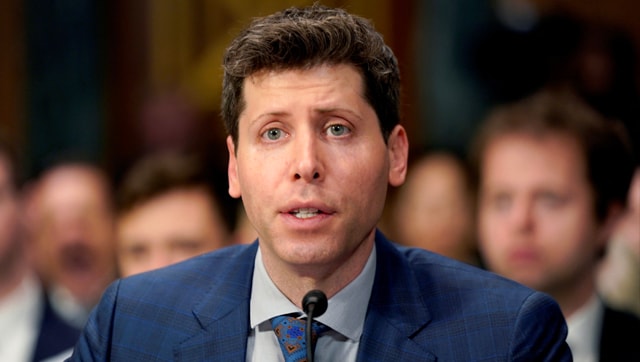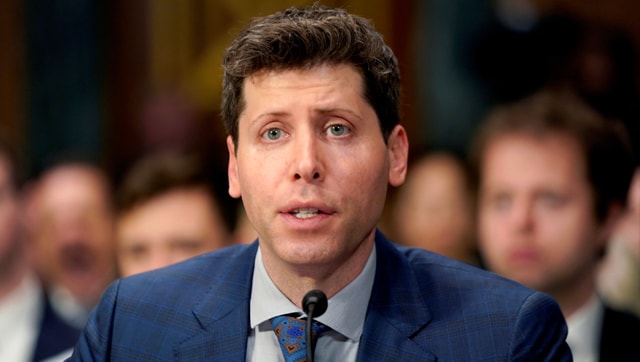ChatGPT In Trouble: OpenAI may go bankrupt by 2024, AI bot costs company $700,000 every day

OpenAI spends about $700,000 a day, just to keep ChatGPT going. The cost does not include other AI products like GPT-4 and DALL-E2. Right now, it is pulling through only because of Microsoft’s $10 billion funding
OpenAI, the AI studio that practically started the conversation around AI among regular, non-technical folks, may be in massive trouble.
In its bid to become the face of generative AI through their AI chatbot ChatGPT, Sam Altman’s AI development studio has put itself in a position, where it might have to soon declare bankruptcy, as per a report by Analytics India Magazine.
Apparently, it costs OpenAI about $700,000 every day to run just one of its AI services – ChatGPT. As a result, Sam Altman’s OpenAI is burning through cash at the moment. Furthermore, despite their attempt to monetise GPT-3.5 and GPT-4, OpenAI is not generating enough revenue to break even at this point. This is leading to an alarming situation.
Related Articles

AI Spoils Broth: Sordid leftover recipes spark controversy in New Zealand

Multiple European countries are investigating OpenAI’s Sam Altman for his eye-scanning crypto
User base in decline
While OpenAI and ChatGPT opened up to a wild start and had a record-breaking number of sign-ups in its initial days, it has steadily seen its user base decline over the last couple of months. According to SimilarWeb, July 2023 saw its user base drop by 12 per cent compared to June – it went from 1.7 billion users to 1.5 billion users. Do note that this data only shows users who visited the ChatGPT website, and does not account for users who are using OpenAI’s APIs
OpenAI’s APIs are also a part of the problem. Many companies who were initially discouraging their employees from using ChatGPT are now buying access to OpenAI’s APIs and are creating their own AI chatbots, in a variety of different workflows.
The problem however, as Analytics India Magazine notes, is that there are several open-source LLM models that are free to use and are allowed to be repurposed, without any licensing issues. As a result, they can be properly customised and adapted to very specific use case scenarios that an organisation might have.
In such a case, why would someone choose OpenAI’s paid, proprietary, and restricted version, over the more adaptable and free-to-use LLaMA 2, especially given its potential superiority in specific scenarios?
Conflict between Sam Altman and OpenAI
OpenAI’s shift towards profitability, combined with Sam Altman’s recent public statements indicates a number of things. Although Altman might not prioritize profits, OpenAI does. While OpenAI is routinely pumping more money to make their GPT LLMs more powerful and more clever, Sam Altman has made several public statements that basically say that AI, if unregulated by the government will prove to be disastrous.
In fact, Altman, has been very vocal about the need for guidelines on how AI is developed. There have been numerous instances where Altman has predicted that AI, in its current form will take away millions of jobs.
Some tech experts would even go as far as to say that Altman is having a Frankenstein moment–one, where he is somewhat regretful of the monster that he has created, although it seems that would be a farfetched reading of the situation.
Despite this, OpenAI has been on the lookout for new and better ways to monetise its GPT-4 LLMs. However, it hasn’t achieved profitability. Its losses reached $540 million since the development of ChatGPT.
Microsoft’s $10 billion investment, along with that of some other venture capital firms has kept OpenAI afloat and going for now. However, as Analytics India Magazine reports, OpenAI’s projection of reaching $200 million in annual revenue in 2023 and aiming for $1 billion in 2024 seems ambitious, given its mounting losses.
Staffing Issues
In case OpenAI goes for an IPO, it might be acquired by a large tech company or a conglomerate. This would serve as a great exit strategy for its current investors. However, there are some issues that may cause a hindrance in an IPO, which in turn may not bring that big a value.
OpenAI is currently going through a period of high attraction rates. They are not laying off people like the rest of the tech industry, per see. However, they are bleeding employees, or rather some top talent, as their staff keep getting poached by their competitors
ChatGPT costs OpenAI $700,000
In December 2022, just months after launch, Altman acknowledged that the cost of running the AI company and ChatGPT was eye-wateringly high and therefore the company chose to monetize it. According to reports, operating ChatGPT costs OpenAI about $700,000, daily. These expenses are currently being covered by Microsoft and other recent investors. However, the recurring cost and OpenAI’s inability to generate ample revenue quickly will create a difficult situation if OpenAI isn’t able to turn things around.
While companies like Google or Meta are often considered to be OpenAI’s primary rivals, people often forget about Musk and xAI. Musk has been involved with AI for a long time, mainly because of Tesla. However, since ChatGPT went as viral as it did, Musk has been making some major moves in the AI space. To begin with, he openly announced that he will be making a competing chatbot called “TruthGPT,” which wouldn’t be as biased or hallucination-prone as OpenAI’s ChatGPT. Furthermore, Firstpost had earlier reported that Musk had bought over 10,000 NVIDIA GPUs for his AI project, at $10,000 a piece, which meant he has spent over $10 million on GPUs alone. Add to that the cost of manpower and running those data centres to train xAI’s algorithms.
Enterprise-level GPU shortages continue to haunt AI companies
Complicating matters further is the ongoing shortage of enterprise-level GPUs. Because of the US-China Tech war, AI and internet companies in China are buying out all enterprise-level GPUs through intermediaries. Some of them, have even managed to work directly with major AI Chip making companies.
A recent SCMP report revealed that various Chinese tech companies have placed orders with NVIDIA for their A800 and A100 AI-Chips that total a staggering $5 billion, which are to be delivered by 2024.
Altman mentioned that the scarcity of GPUs in the market is hindering the company’s ability to enhance and train new models. OpenAI’s recent filing for a trademark on ‘GPT-5’ indicates their intention to continue training models. However, this pursuit has led to a notable drop in ChatGPT’s output quality.
All of this put together– growing financial losses, declining userbase, the inability to generate consistent and meaningful revenue, and diminishing quality of their star product– means one simple thing. OpenAI is in a world of trouble and it needs to find a way to profitability, quickly.
For all the latest Technology News Click Here
For the latest news and updates, follow us on Google News.

